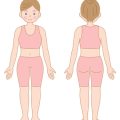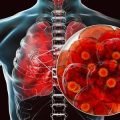Understanding Cardiovascular Diseases in the U.S.
Cardiovascular diseases (CVDs) are a group of conditions that affect the heart and blood vessels. In the United States, these diseases are a leading cause of illness and death. Common types of cardiovascular diseases include coronary artery disease, heart failure, stroke, and high blood pressure. Many Americans are affected by at least one form of CVD during their lifetime.
Prevalence of Cardiovascular Diseases
Heart disease is the number one cause of death for both men and women in the U.S. According to the Centers for Disease Control and Prevention (CDC), about 1 in every 5 deaths is related to heart disease. Millions of Americans live with some type of cardiovascular condition, making it a serious public health concern.
| Type of CVD | Number of U.S. Adults Affected | Main Risk Factors |
|---|---|---|
| Coronary Artery Disease | Over 18 million | High cholesterol, smoking, lack of exercise |
| Stroke | Nearly 7 million | High blood pressure, diabetes, obesity |
| Heart Failure | More than 6 million | Previous heart attacks, high blood pressure |
| High Blood Pressure (Hypertension) | About 120 million | Poor diet, stress, family history |
The Impact on Public Health
The high rates of cardiovascular diseases place a significant burden on American families and the healthcare system. Hospital visits, long-term medication use, and loss of work productivity are just some ways these diseases impact daily life. Many risk factors for CVDs—like unhealthy eating habits, sedentary lifestyles, and smoking—are common in the U.S., but they can often be managed or prevented through lifestyle changes.
The Role of Aerobic Exercise in Cardiovascular Health
Aerobic exercise, such as walking, jogging, cycling, or swimming, has been shown to help prevent and manage many types of cardiovascular diseases. Regular physical activity can lower blood pressure, improve cholesterol levels, support healthy weight management, and reduce stress—all key factors in reducing heart disease risk among Americans.
2. What is Aerobic Exercise?
Defining Aerobic Exercise
Aerobic exercise, often called “cardio,” is any physical activity that increases your heart rate and breathing while using large muscle groups over a sustained period. The word “aerobic” means “with oxygen,” so these exercises help your body use oxygen more efficiently. Regular aerobic workouts strengthen your heart, lungs, and circulatory system, making them especially important for preventing and managing cardiovascular diseases.
Popular Types of Aerobic Exercise in the U.S.
Americans enjoy a variety of aerobic activities, many of which can be done alone or with others. Here are some common examples:
| Type of Aerobic Exercise | Description |
|---|---|
| Walking | Easy to start, low impact, can be done anywhere—just put on sneakers and go! |
| Running/Jogging | A higher-intensity option that burns more calories and boosts heart health. |
| Cycling | Great for all ages; can be done outdoors or on a stationary bike indoors. |
| Swimming | Low-impact on joints and works out the entire body. |
| Dancing (Zumba, Aerobics Classes) | Fun group activities that make exercising feel like a party. |
| Rowing | Full-body workout that’s easy on the joints but great for endurance. |
| Group Fitness Classes | Includes spinning, step aerobics, or HIIT classes at local gyms or community centers. |
Recommended Guidelines for Adults in America
The American Heart Association recommends adults aim for at least 150 minutes of moderate-intensity aerobic exercise per week. This could mean 30 minutes a day, five days a week. If you prefer more vigorous activities like running, 75 minutes per week will do the trick. You can also mix moderate and vigorous activities throughout the week to fit your schedule and preferences.
| Intensity Level | Time Per Week | Examples |
|---|---|---|
| Moderate | 150 minutes | Brisk walking, casual cycling, water aerobics |
| Vigorous | 75 minutes | Running, lap swimming, fast cycling |
Tips for Getting Started
- If youre new to exercise or have health concerns, check with your doctor before starting a new routine.
- Start slow and gradually increase intensity and duration as you get stronger.
- Choose activities you enjoy to make it easier to stick with your routine.
- You can break up your activity into shorter sessions throughout the day—every little bit counts!

3. How Aerobic Exercise Helps Prevent Heart Disease
The Power of Regular Aerobic Activity
Aerobic exercise, also known as “cardio,” includes activities like brisk walking, jogging, cycling, swimming, and even dancing. Doing these activities regularly can make a big difference in your heart health. Let’s take a closer look at how aerobic exercise helps keep your heart strong and reduces the risk of cardiovascular disease.
Reducing Major Risk Factors
When you move your body and get your heart pumping, you’re doing more than just burning calories. Here’s how regular aerobic activity tackles some of the biggest risk factors for heart disease:
| Risk Factor | How Aerobic Exercise Helps |
|---|---|
| High Blood Pressure | Lowers blood pressure by making your heart stronger and helping blood flow more easily. |
| High Cholesterol | Raises “good” HDL cholesterol while lowering “bad” LDL cholesterol and triglycerides. |
| Obesity | Burns calories to help with weight loss or maintaining a healthy weight. |
| Diabetes | Improves how your body uses insulin and controls blood sugar levels. |
| Stress | Releases endorphins that help lower stress and improve mood. |
Boosting Heart Strength and Efficiency
Aerobic exercise trains your heart to become more efficient. Over time, your heart pumps more blood with each beat, which means it doesn’t have to work as hard during everyday activities or when you’re active. This not only improves stamina but also lowers the strain on your heart.
Simple Steps to Get Started
You don’t need fancy equipment or a gym membership to enjoy the benefits. Even 30 minutes of brisk walking five days a week can make a big difference. Try breaking it up into shorter sessions if you’re busy—every bit counts toward a healthier heart!
4. Aerobic Exercise for Managing Existing Cardiovascular Conditions
The Importance of Aerobic Exercise in Cardiac Rehabilitation
For people who have already been diagnosed with cardiovascular disease, aerobic exercise is a key part of cardiac rehabilitation programs across the United States. These programs are designed by healthcare professionals to help patients recover after heart attacks, heart surgery, or other heart-related health events. The goal is to safely get the heart stronger and help prevent future problems. Aerobic exercise helps improve circulation, lower blood pressure, manage weight, and boost overall well-being.
How Aerobic Exercise Fits into Long-term Heart Health Management
Staying active through regular aerobic activity is just as important for long-term management as it is for recovery. Doctors often recommend activities like walking, swimming, biking, or using a treadmill at a moderate pace. These exercises are easy to adjust depending on your fitness level and can be done at home, at a gym, or even in your neighborhood park. The American Heart Association usually suggests aiming for at least 150 minutes of moderate-intensity aerobic activity each week, but your healthcare provider may tailor this based on your needs.
Common Types of Aerobic Exercise in Cardiac Rehab
| Exercise Type | Benefits | Examples |
|---|---|---|
| Walking | Low-impact, easy to start, improves endurance | Treadmill walking, outdoor walks around the block |
| Cycling | Gentle on joints, can be done indoors or outdoors | Stationary bike, cycling around the neighborhood |
| Swimming/Water Aerobics | Reduces stress on joints, full-body workout | Laps in a pool, water exercise classes at local YMCA or rec center |
| Group Classes | Social support, motivation from others | Zumba Gold®, SilverSneakers® cardio classes |
Key Points for Safe Aerobic Exercise After Heart Disease Diagnosis
- Start slow: Begin with shorter sessions and gradually increase time as your body gets stronger.
- Listen to your body: Stop exercising if you feel chest pain, dizziness, or unusual shortness of breath.
- Work with your care team: Always follow your doctor’s advice and check in regularly about your progress.
- Monitor intensity: Use the “talk test”—you should be able to talk but not sing during aerobic activity.
- Mental health matters: Regular movement can help reduce anxiety and depression often associated with heart disease.
Your Support System Matters
Aerobic exercise doesn’t have to be boring or lonely. Many Americans find motivation by joining walking groups, attending group fitness classes designed for heart health, or setting up friendly step challenges with family and friends. Local community centers and hospitals often offer specialized programs that make staying active easier and more enjoyable.
5. Making Aerobic Exercise a Part of Everyday Life
Practical Tips for Busy Americans
Incorporating aerobic exercise into daily life can feel challenging, especially with busy work schedules, family responsibilities, and other commitments. However, making small changes and using creative strategies can help you stay active without needing to carve out extra hours each day.
Easy Ways to Add Aerobic Activity
| Activity | How to Include It |
|---|---|
| Walking or Jogging | Take a brisk walk during lunch breaks or after dinner; use the stairs instead of the elevator. |
| Cycling | Bike to work or run errands on a bike if possible; join local cycling groups for fun and motivation. |
| Dancing | Put on your favorite playlist and dance at home; try group dance classes like Zumba or line dancing at community centers. |
| Group Sports | Join recreational basketball, soccer, or softball leagues; participate in local charity walks or runs. |
| Home Workouts | Use online videos or fitness apps for guided aerobic routines that fit your schedule. |
Culturally Relevant Strategies for Americans
- Leverage Community Resources: Many American towns and cities have parks, walking trails, and recreation centers that offer free or low-cost access to aerobic activities. Explore “walk with a doc” programs or neighborhood walking groups.
- Family Time Can Be Active Time: Turn family gatherings into opportunities for movement, such as playing tag, hiking, or organizing backyard games.
- Incorporate Technology: Wearable fitness trackers and smartphone apps can set reminders and track progress, making it easier to stay motivated. Compete with friends through step challenges or virtual races.
- Cultural Celebrations: Participate in traditional American events like Fourth of July fun runs, Thanksgiving Turkey Trots, or holiday-themed fitness events which often include walking or running components suitable for all ages.
Addressing Common Barriers
| Barrier | Simple Solution |
|---|---|
| Lack of Time | Break up activity into short 10-minute sessions throughout the day; multitask by walking while taking phone calls. |
| Lack of Motivation | Set realistic goals; find a workout buddy for accountability; reward yourself for meeting activity milestones. |
| Poor Weather | Try mall walking, indoor gym workouts, or streaming aerobic videos at home when weather isn’t ideal. |
| No Access to Equipment | Aerobic activities like walking, running, jumping jacks, and dancing require little or no equipment—just comfortable shoes! |
Safety Considerations Before Starting Aerobic Exercise
- If you have been inactive or have health conditions like heart disease, diabetes, or joint issues, talk with your healthcare provider before starting a new exercise routine.
- Start slow and gradually increase intensity and duration to prevent injury.
- Stay hydrated and wear appropriate footwear to protect your joints.
- If you experience chest pain, dizziness, shortness of breath, or joint pain during exercise, stop immediately and seek medical attention if symptoms persist.
Your Next Steps Toward a Heart-Healthy Lifestyle
The key is to find enjoyable activities that fit your lifestyle and make them part of your daily routine. By embracing practical solutions and culturally familiar options, aerobic exercise can become an easy and rewarding habit—one that supports heart health for years to come.


